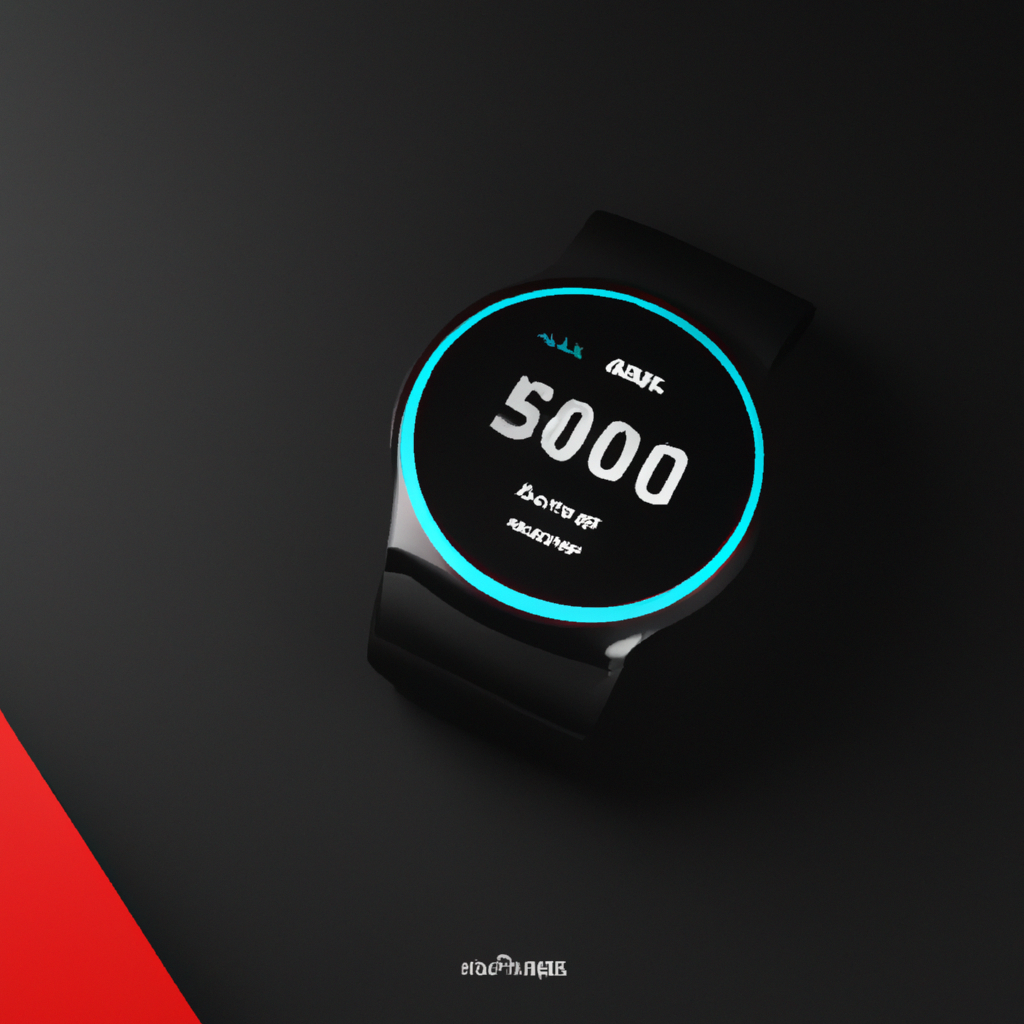Imagine a world where your smartwatch not only tracks your steps and heart rate but also anticipates your needs by proactively offering recommendations based on your personal preferences. The future of AI wearables holds the promise of seamlessly integrating artificial intelligence into our everyday lives, revolutionizing the way we interact with technology. From personalized health monitoring to smart notification filtering, AI wearables have the potential to enhance our productivity, well-being, and overall convenience. As technology continues to advance, these intelligent devices are poised to become an indispensable part of our daily routines, empowering us to lead more efficient and satisfying lives.
The Current State of AI Wearables
Overview of Existing AI Wearables
AI wearables have become increasingly popular in recent years, revolutionizing the way we interact with technology and enhancing our daily lives. These devices incorporate artificial intelligence (AI) technology to provide personalized experiences, collect and analyze data, and improve overall functionality. From smartwatches and fitness trackers to augmented reality glasses and virtual assistants, the range of AI wearables available on the market is constantly expanding.
Key Players in the Industry
Several key players have emerged as leaders in the AI wearables industry, each bringing their unique technological advancements and design approaches to the market. Companies such as Apple, Samsung, and Fitbit have dominated the smartwatch and fitness tracker segment, offering devices that seamlessly integrate with smartphones and provide real-time data on health and activity levels. Other players like Google and Microsoft have focused on developing augmented reality glasses that overlay digital information onto the real world, opening up new possibilities for gaming, navigation, and productivity.
Consumer Reactions and Reviews
Overall, consumer reactions to AI wearables have been mixed. While some individuals have embraced these devices for their convenience and functionality, others have raised concerns about privacy and data security. Reviews from users highlight the importance of a seamless user experience, accurate data tracking, and long battery life as key factors in determining the success and adoption of AI wearables. As more consumers become aware of the potential benefits and drawbacks of these devices, their opinions and expectations will continue to shape the industry’s direction.
Technological Advancements in AI Wearables
Latest Developments in AI and Machine Learning
AI wearables heavily rely on AI and machine learning algorithms to process and analyze the data collected from sensors. Recent advancements in AI technology have enabled wearables to become more intelligent and capable of providing personalized recommendations and insights. Machine learning algorithms can now better recognize patterns, understand user preferences, and adapt to individual needs, resulting in more accurate and valuable insights for users.
Innovations in Sensors and Hardware
The development of smaller, more advanced sensors and hardware components has significantly contributed to the evolution of AI wearables. Sensors such as heart rate monitors, accelerometers, gyroscopes, and GPS modules allow wearables to accurately track and measure various aspects of users’ daily lives, including fitness activities, sleep quality, and even environmental factors. Furthermore, advancements in battery technology have increased battery life, ensuring that AI wearables can operate for longer durations without requiring frequent recharging.
Trends in Power Consumption and Battery Life
A key consideration for AI wearables is power consumption and battery life. Users expect their devices to last throughout the day without interruption, and manufacturers are working to meet this demand. Through advancements in energy-efficient components and optimized software, AI wearables are becoming more power-efficient, allowing users to enjoy extended usage times. Wireless charging and rapid-charging technologies are also emerging, making it more convenient for users to keep their wearables powered up and ready to use.

The Role of Big Data in AI Wearables
Increasing Role of Data Collection
AI wearables generate an immense amount of data through their sensors and user interactions. This data is a valuable resource that can provide insights into users’ health, behavior, and preferences. With the increasing role of data collection, AI wearables are able to offer personalized recommendations, such as exercise plans, sleep patterns, and even dietary suggestions. This data-driven approach allows users to optimize their routines and make informed decisions about their well-being.
Data Processing and Analysis
The vast amount of data collected by AI wearables requires sophisticated processing and analysis techniques to extract meaningful and actionable insights. Machine learning algorithms are employed to mine the data, identify patterns, and generate personalized recommendations. Advanced analytics tools enable wearables to provide real-time feedback on users’ activities, helping them stay motivated and make positive lifestyle changes. However, ensuring the accuracy and privacy of this data remains a challenge.
Concerns about Data Security
One major concern associated with AI wearables is data security. With the continuous collection of sensitive information, such as heart rate, location, and daily routines, users are rightfully concerned about the privacy and misuse of their data. Wearable manufacturers must address these concerns by implementing robust security measures, including encrypted data transmission and strict access controls. Moreover, regulations and legal frameworks need to be established to protect user privacy and prevent unauthorized use of personal data.
Evolving Design and Aesthetic Approaches
User Experience and Design Improvements
As AI wearables become more integrated into our daily lives, user experience and design play a crucial role in their adoption and acceptance. Wearables need to be intuitive, user-friendly, and comfortable to wear for extended periods. Improvements in touchscreens, voice recognition, and gesture controls have enhanced the user experience, making interaction with the devices more seamless and natural. Additionally, the design and aesthetics of wearables have evolved to be more stylish and customizable, appealing to a wider range of users.
Role of Fashion and Aesthetics in AI Wearables
One notable trend in the AI wearables industry is the increasing emphasis on fashion and aesthetics. Recognizing that users want their wearables to seamlessly integrate into their personal style, manufacturers have collaborated with fashion designers and brands to create wearables that are both functional and fashionable. From customizable watch faces and interchangeable bands to elegant and minimalist designs, wearables now offer a range of options to suit individual tastes. This fusion of fashion and technology opens up new possibilities for self-expression and personalization.
Accessibility and Inclusion in Design
AI wearables have the potential to improve accessibility and inclusion by catering to a diverse range of users. Design innovations such as larger touchscreens, adjustable straps, and compatibility with assistive technologies enable individuals with disabilities to use wearables effectively. Furthermore, AI algorithms can be tailored to accommodate different user needs, offering personalized experiences for individuals with varying requirements. By prioritizing accessibility and inclusion in design, manufacturers can ensure that AI wearables are accessible and beneficial to all users, regardless of their abilities.

Potential Uses and Applications
Companion and Fitness Applications
AI wearables have found significant application in the companion and fitness sectors. These devices can act as personal assistants, providing reminders, notifications, and even virtual coaching for fitness activities. With built-in sensors, wearables can track users’ heart rate, steps taken, calories burned, and sleep patterns, providing a comprehensive overview of their health and fitness progress. Additionally, wearables can monitor and provide feedback on users’ stress levels, offering techniques and insights to help manage and reduce stress.
Workplace Efficiency and Safety Solutions
AI wearables have the potential to improve workplace efficiency and safety across various industries. In sectors such as manufacturing, construction, and healthcare, wearable devices can monitor workers’ vital signs, detect fatigue, and provide real-time feedback to prevent injuries and accidents. Wearable cameras and head-mounted displays can enhance work collaboration and training, providing interactive instructions and guidance. These applications not only increase productivity but also prioritize the well-being and safety of individuals in high-risk environments.
Healthcare and Medical Diagnosis Tools
The healthcare industry has seen tremendous benefits from AI wearables. These devices enable individuals to stay on top of their health by continuously monitoring vital signs, including heart rate, blood pressure, and oxygen levels. Such data can be shared with healthcare professionals, allowing for remote monitoring and early detection of potential health issues. AI wearables also play a role in medical diagnosis, with wearable devices being used to detect abnormalities in heart rhythms, sleep patterns, and even detect early signs of chronic conditions such as diabetes and asthma.
Benefits and Drawbacks of AI Wearables
User Convenience and Enhanced Efficiency
AI wearables offer users convenience and enhanced efficiency in various aspects of their lives. They consolidate multiple functionalities into a single device, eliminating the need to carry multiple gadgets. Whether it’s checking notifications, tracking fitness goals, or accessing virtual assistants, wearables provide quick and easy access to information and services. This streamlined experience saves users time and increases overall productivity.
Potential Health and Wellness Improvements
One of the major benefits of AI wearables is the potential for improved health and wellness. By continuously monitoring vital signs and providing real-time feedback, wearables can help users make informed decisions about their lifestyle choices. They can act as personal trainers, reminding users to exercise, tracking their progress, and suggesting personalized workout routines. Wearables can also monitor sleep patterns and provide insights on improving sleep quality, which directly impacts overall well-being.
Privacy Concerns and Oversight
Despite the numerous benefits, privacy concerns surrounding AI wearables remain a significant drawback. The constant collection of personal data raises questions about who has access to this information and how it may be used. Users need assurance that their data is protected and not misused or sold without their consent. Strong oversight and regulations are needed to ensure that manufacturers abide by ethical standards and prioritize user privacy. Transparency in data collection practices and informed consent should be paramount in the development and use of AI wearables.
Challenges Facing AI Wearables Market
Hardware and Software Limitations
Developing AI wearables comes with its fair share of challenges. Hardware limitations, such as limited processing power, storage capacity, and battery life, can restrict the capabilities and functionalities of these devices. Additionally, ensuring seamless and reliable wireless connectivity poses technical hurdles. On the software side, creating accurate and efficient machine learning algorithms requires extensive resources and expertise. Overcoming these limitations is essential for the future growth and advancement of AI wearables.
Lack of User Trust and Privacy Concerns
Building trust between users and wearables manufacturers is critical for widespread adoption. Many individuals are wary of sharing personal data due to concerns about privacy and misuse. Manufacturers must demonstrate a commitment to data security and transparent data practices to gain and maintain user trust. Additionally, educating users about the benefits and safeguards in place can help address apprehensions and build confidence in AI wearables as reliable and secure devices.
Insufficient Legal and Regulatory Frameworks
The rapid advancement of AI wearables has outpaced the development of appropriate legal and regulatory frameworks. As a result, there is a lack of clear guidelines and standards governing data privacy, security, and ethical use of AI wearables. It is crucial for governments and regulatory bodies to collaborate with industry stakeholders to establish comprehensive regulations that protect user rights, ensure responsible data collection and use, and foster innovation in this burgeoning field.
Future Trends in AI Wearables
Predicted Technological Advancements
The future of AI wearables is bright, with several significant technological advancements expected. Continued improvements in AI and machine learning algorithms will enable wearables to provide even more accurate and personalized insights. Advancements in materials science may lead to wearable devices that are more flexible, lightweight, and comfortable to wear. Miniaturization of components and further developments in battery technology will also contribute to the development of more advanced and long-lasting wearables.
Potential New Use Cases
AI wearables have the potential to expand into new use cases and industries. In the education sector, wearables can enhance interactive learning experiences and provide personalized educational content. In the entertainment industry, augmented reality wearables may revolutionize gaming and immersive experiences. Additionally, wearables can be utilized in environmental monitoring, assisting in data collection and analysis for climate research and conservation efforts.
Changes in Consumer Behavior and Expectation
As AI wearables become more integrated into our lives, consumer behavior and expectations will continue to evolve. Consumers’ reliance on wearables for health monitoring, productivity, and entertainment purposes will grow, leading to a higher demand for more advanced and specialized devices. Additionally, users will expect seamless integration and compatibility across multiple devices, creating opportunities for manufacturers to offer interconnected ecosystems and cross-platform functionality.
The Impact of AI Wearables on Society
Potential Social and Cultural Shifts
The widespread adoption of AI wearables has the potential to bring about significant social and cultural shifts. As these devices become more prevalent, they may change the way we communicate, access information, and interact with the world around us. Wearables may foster a culture of constant connectivity, blurring the boundaries between work and personal life. They may also challenge existing social norms and etiquette, raising questions about appropriate usage and digital privacy in public spaces.
Jobs and Workforce Impact
The introduction of AI wearables in the workplace can have a profound impact on jobs and the workforce. While these devices can augment productivity and assist in various tasks, there is a concern that they may also lead to job displacement. Certain manual and repetitive tasks may be automated, requiring individuals to acquire new skills to adapt to the changing job landscape. Workforce training and reskilling efforts will become crucial to ensure individuals are prepared to thrive in an AI-driven workplace.
Ethics and Morality of AI Wearables
The ethical implications of AI wearables cannot be overlooked. As wearables become more integrated into our lives, they possess the potential to collect and analyze vast amounts of personal data, raising concerns about surveillance and informed consent. Difficult decisions on data ownership, privacy, and the ethical use of AI algorithms need to be addressed to ensure that wearables are developed and used in a manner that respects individual rights and societal values.
Investment Opportunities and Market Forecast
Growth and Investment Trends
The AI wearables market is projected to experience substantial growth in the coming years. With increasing consumer adoption and advancements in technology, the market for AI wearables presents numerous investment opportunities. Investors are keen to support innovative startups focused on hardware and software development, as well as companies that can leverage AI wearables in healthcare, fitness, and workplace applications. Additionally, venture capital firms are actively funding research and development to drive further advancements in AI wearables technology.
Market Analysis and Predictions
Market analysts predict that the demand for AI wearables will continue to rise as consumers become more health-conscious and seek convenient and personalized technology solutions. The market is anticipated to witness a shift towards more advanced and feature-rich wearables, with a focus on seamless integration with smartphones and other smart devices. Furthermore, the healthcare sector is expected to be a significant driver of adoption, as wearables play an increasingly vital role in remote patient monitoring and telehealth services.
Risks and ROI Expectations
Investing in the AI wearables market comes with its share of risks. With rapid technological advancements and evolving consumer preferences, there is a degree of uncertainty regarding which products and companies will succeed in the long term. Regulatory risks, such as changing data protection laws, can also impact the ROI of investments. However, the potential for significant returns on investment exists, particularly for those companies that can navigate these challenges, deliver innovative solutions, and capture a significant market share.
In summary, AI wearables have the potential to transform our lives by providing personalized experiences, improving health and wellness, and enhancing productivity. The industry is rapidly evolving, with advancements in AI technology, sensors, and design aesthetics driving innovation. However, challenges such as data security, hardware limitations, and regulatory frameworks need to be addressed for the market to reach its full potential. As AI wearables continue to advance and gain wider acceptance, they will undoubtedly shape our future in profound ways.



